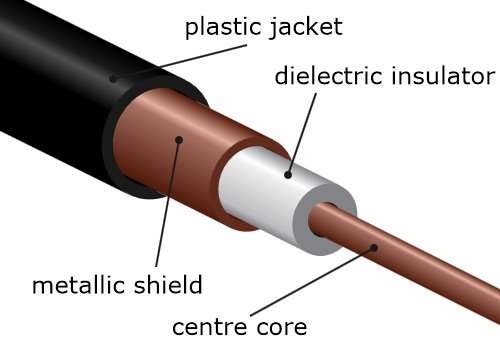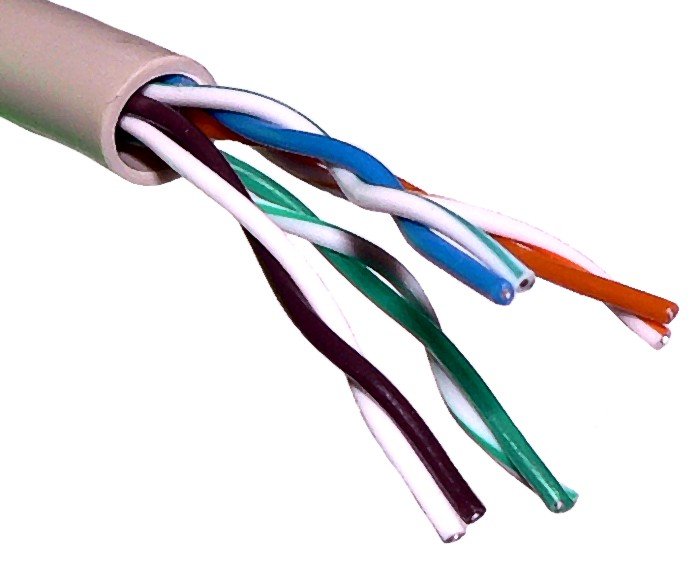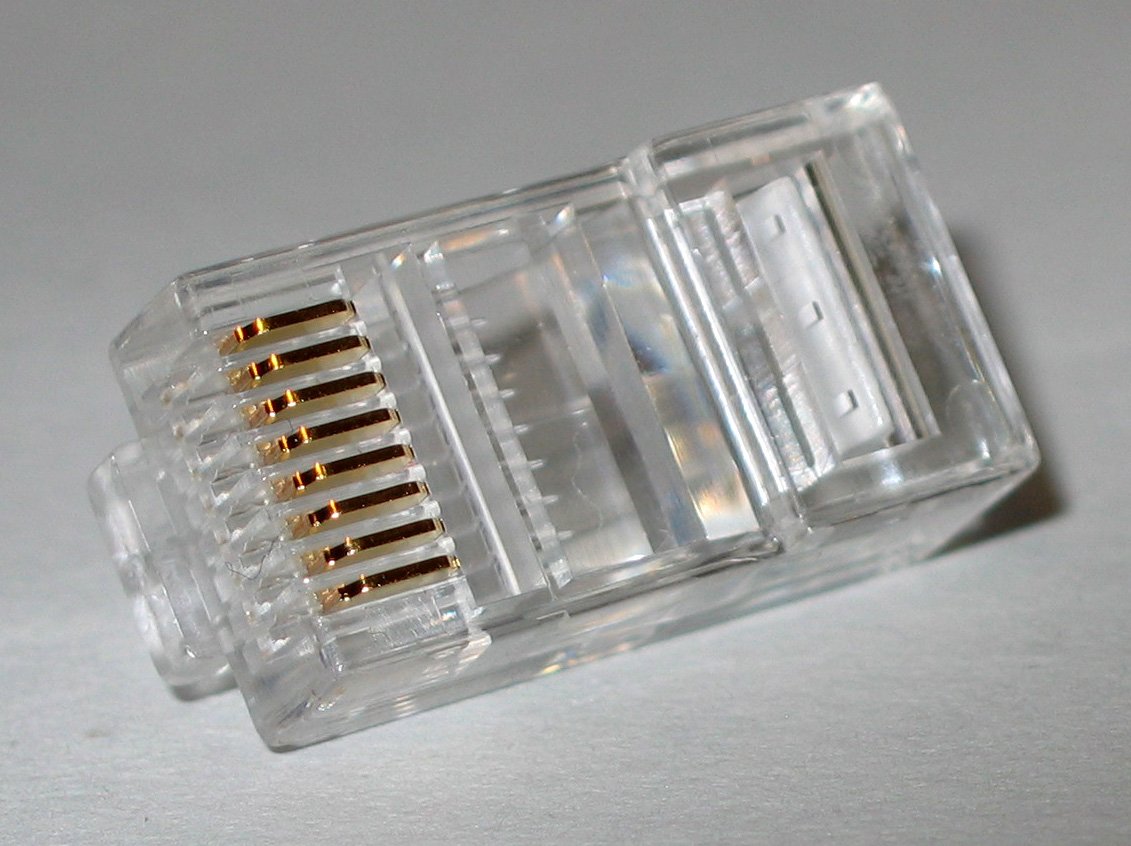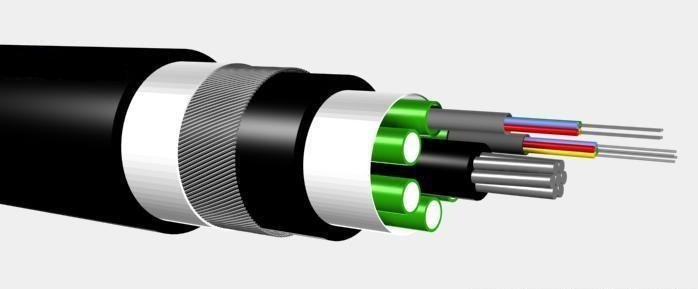There are three cable types commonly used for Ethernet cabling: coaxial, twisted pair, and fiber-optic cabling. In today’s LANs, the twisted pair cabling is the most popular type of cabling, but the fiber-optic cabling usage is increasing, especially in high performance networks. Coaxial cabling is generally used for cable Internet access. Let’s explain all three cable types in more detail.
Coaxial cabling
A coaxial cable has an inner conductor that runs down the middle of the cable. The conductor is surrounded by a layer of insulation which is then surrounded by another conducting shield, which makes this type of cabling resistant to outside interference. This type of cabling comes in two types – thinnet and thicknet. Both types have maximum transmission speed of 10 Mbps. Coaxial cabling was previously used in computer networks, but today are largely replaced by twisted-pair cabling (Photo credit: Wikipedia)
Twisted-pair cabling
A twisted-pair cable has four pair of wires. These wires are twisted around each other to reduce crosstalk and outside interference. This type of cabling is common in current LANs.
Twisted-pair cabling can be used for telephone and network cabling. It comes in two versions, UTP (Unshielded Twisted-Pair) and STP (Shielded Twisted-Pair). The difference between these two is that an STP cable has an additional layer of insulation that protects data from outside interferences.
Here you can see how a twisted pair cable looks like (Photo credit: Wikipedia):
A twisted-pair cable uses 8P8C connector, sometimes wrongly referred to as RJ45 connector (Photo credit: Wikipedia).
Fiber-optic cabling
This type of cabling uses optical fibers to transmit data in the form of light signals. The cables have strands of glass surrounded by a cladding material (Photo credit: Wikipedia):
This type of cabling can support greater cable lengths than any other cabling type (up to a couple of miles). The cables are also immune to electromagnetic interference. As you can see, this cabling method has many advantages over other methods but its main drawback is that it is more expensive.
There are two types of fiber-optic cables:
- Single-mode fiber (SMF) – uses only a single ray of light to carry data. Used for larger distances.
- Multi-mode fiber (MMF) – uses multiple rays of light to carry data. Less expensive than SMF.
Four types of connectors are commonly used:
- ST (Straight-tip connector)
- SC (Subscriber connector)
- FC (Fiber Channel)
- LC (Lucent Connector)
Download our Free CCNA Study Guide PDF for complete notes on all the CCNA 200-301 exam topics in one book.
We recommend the Cisco CCNA Gold Bootcamp as your main CCNA training course. It’s the highest rated Cisco course online with an average rating of 4.8 from over 30,000 public reviews and is the gold standard in CCNA training:




